Abstract
The air of loose-boxes holding pigs affected with swine vesicular disease was sampled for virus. In the multistage impinger virus to a titre of 102·6 TCID 50 was associated with particles greater than 6 μm., 101·6 with particles 3-6 μm. and 101·4 or less with particles less than 3 μm. In the noses of workers in contact with the pigs for periods not less than 5 min., virus to a titre of 102·4 TCID 50 was found. Virus was recovered from the air for 2-3 days during the disease and maximum titre in pigs infected by injection or by contact occurred on the second to third day after generalization of the lesions. The amounts of virus were about 160-fold less than those recovered from pigs affected with foot-and-mouth disease, and the quantity and time of excretion suggest that the source of swine vesicular disease virus in the aerosol may be from the lesions and skin rather than from the respiratory tract.
Full text
PDF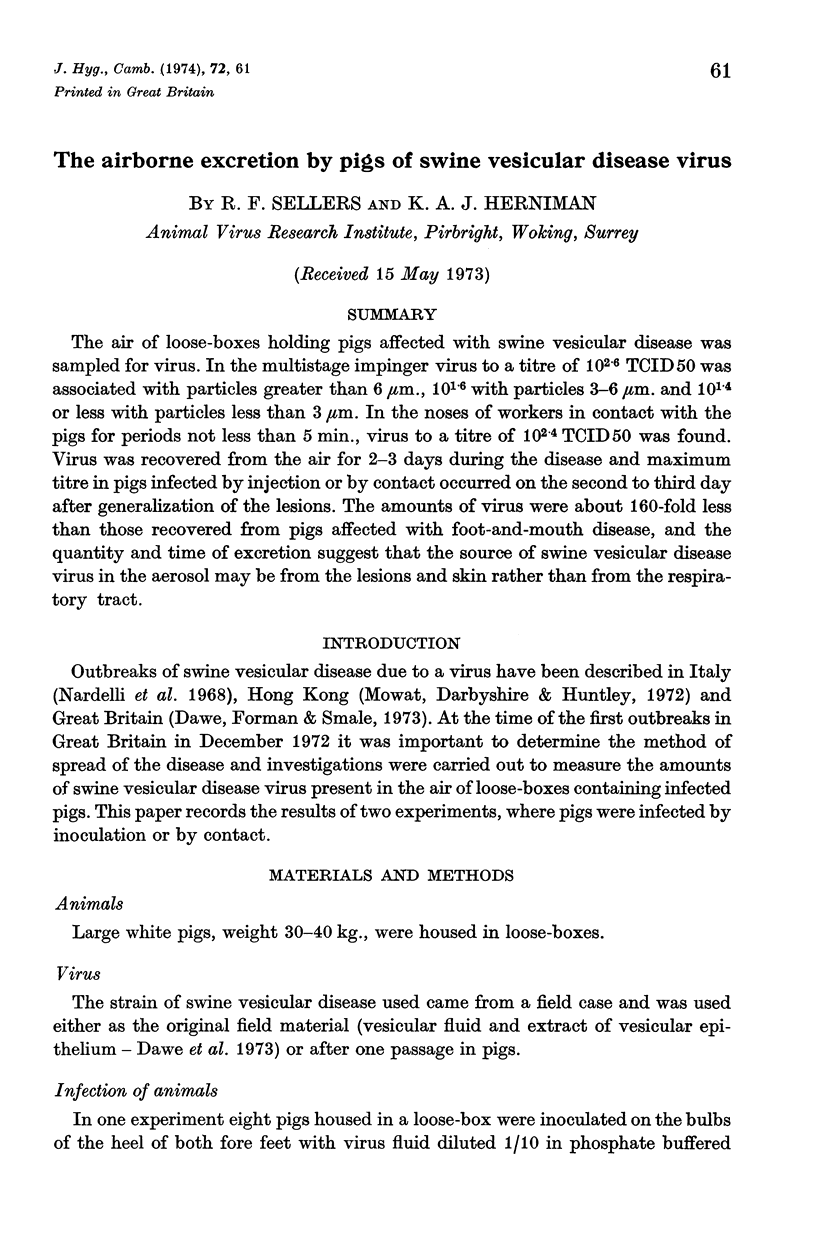
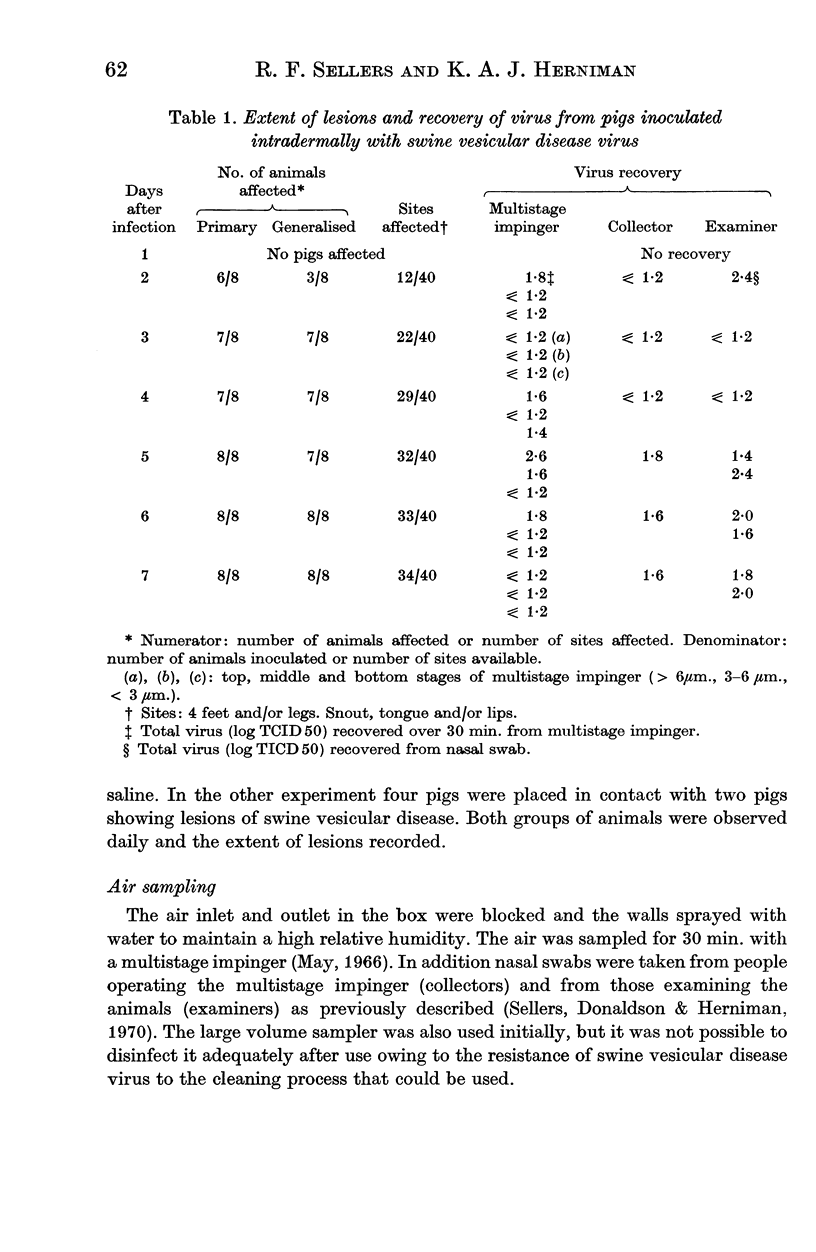
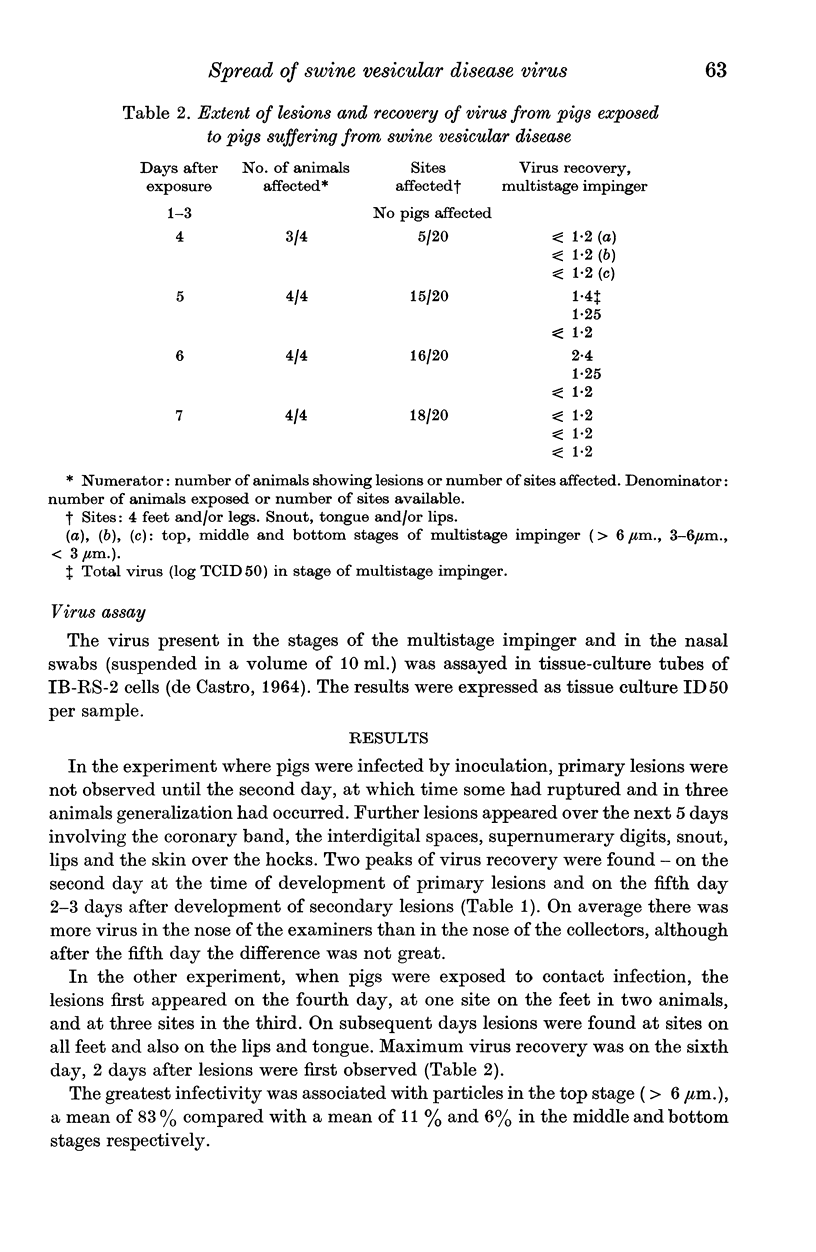
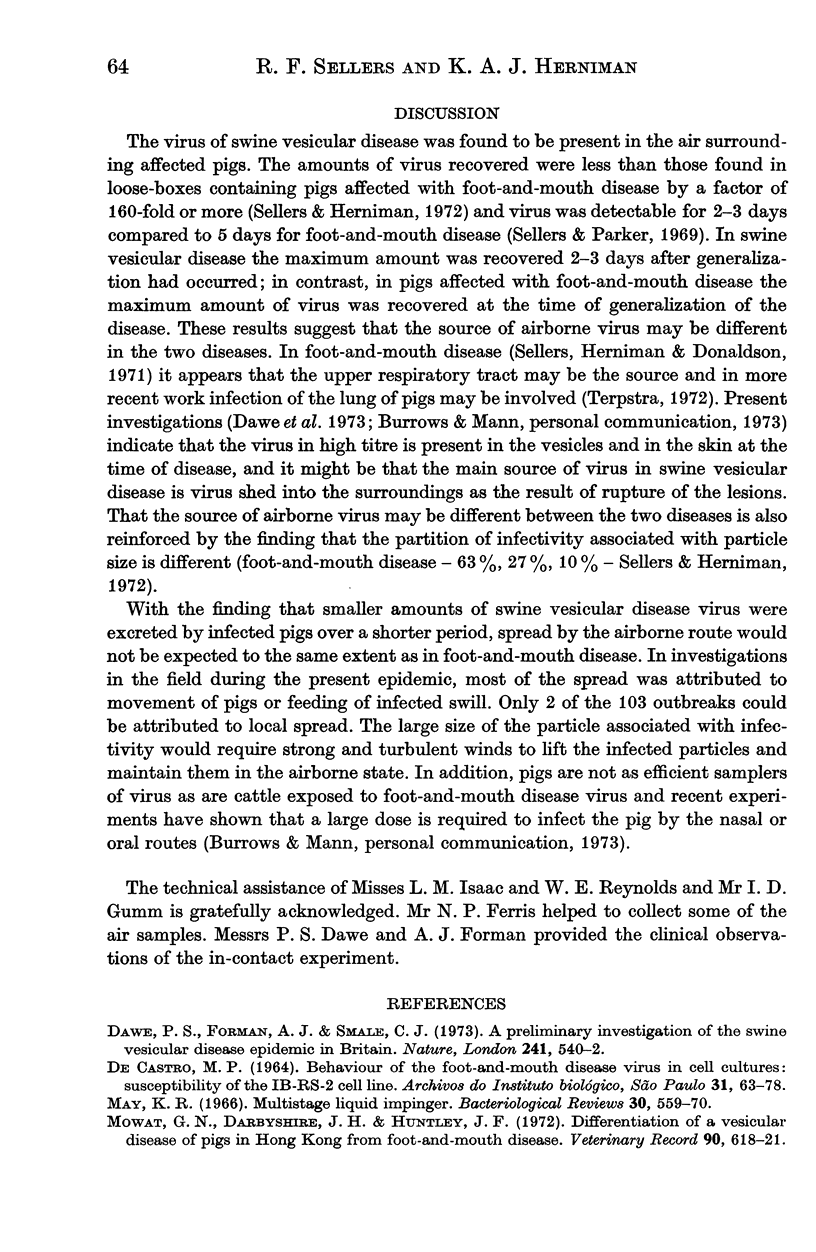
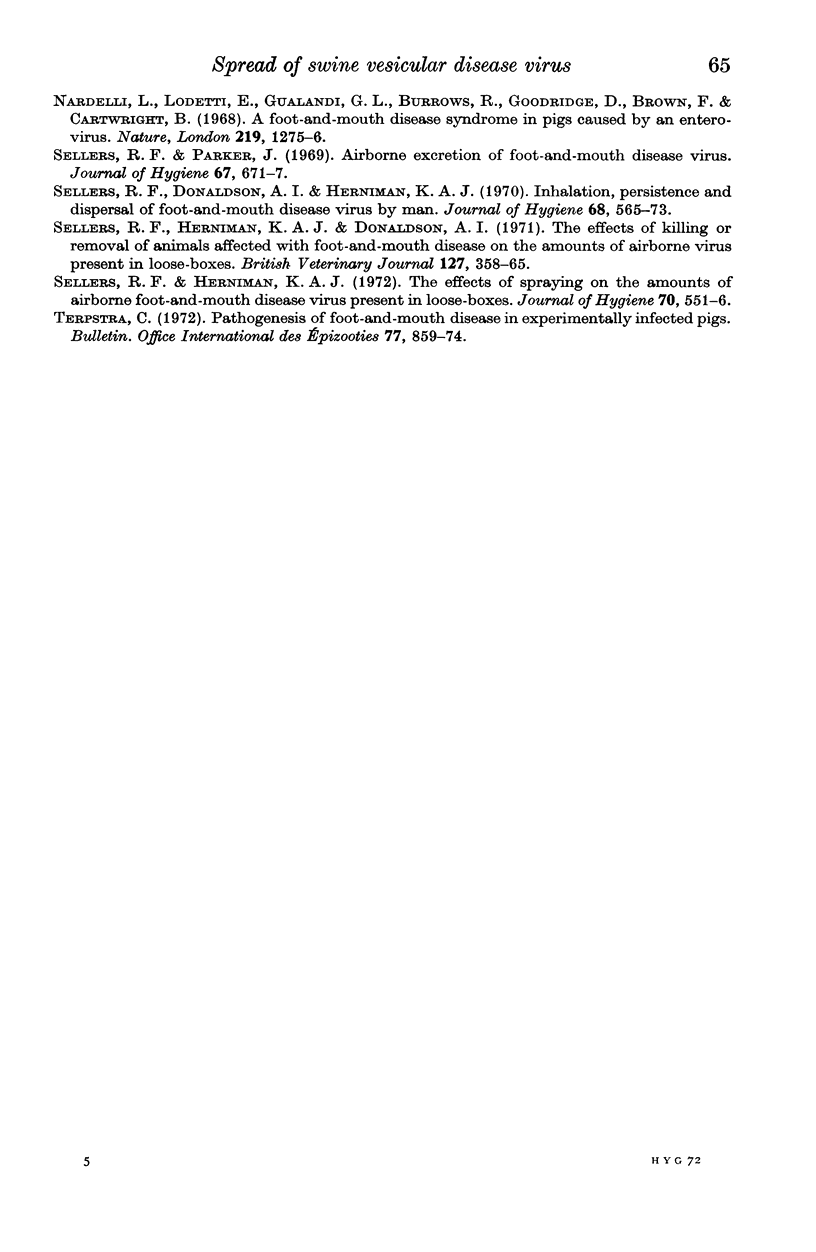
Selected References
These references are in PubMed. This may not be the complete list of references from this article.
- Dawe P. S., Forman A. J., Smale C. J. A preliminary investigation of the swine vesicular disease epidemic in Britain. Nature. 1973 Feb 23;241(5391):540–542. doi: 10.1038/241540a0. [DOI] [PubMed] [Google Scholar]
- May K. R. Multistage liquid impinger. Bacteriol Rev. 1966 Sep;30(3):559–570. doi: 10.1128/br.30.3.559-570.1966. [DOI] [PMC free article] [PubMed] [Google Scholar]
- Mowat G. N., Darbyshire J. H., Huntley J. F. Differentiation of a vesicular disease of pigs in Hong Kong from foot-and-mouth disease. Vet Rec. 1972 May 27;90(22):618–621. doi: 10.1136/vr.90.22.618. [DOI] [PubMed] [Google Scholar]
- Nardelli L., Lodetti E., Gualandi G. L., Burrows R., Goodridge D., Brown F., Cartwright B. A foot and mouth disease syndrome in pigs caused by an enterovirus. Nature. 1968 Sep 21;219(5160):1275–1276. doi: 10.1038/2191275a0. [DOI] [PubMed] [Google Scholar]
- Sellers R. F., Donaldson A. I., Herniman K. A. Ihalation, persistence and dispersal f foot-and-mouth disease virus by man. J Hyg (Lond) 1970 Dec;68(4):565–573. doi: 10.1017/s0022172400042492. [DOI] [PMC free article] [PubMed] [Google Scholar]
- Sellers R. F., Herniman K. A., Donaldson A. I. The effects of killing or removal of animals affected with foot-and-mouth disease on the amounts of airborne virus present in looseboxes. Br Vet J. 1971 Aug;127(8):358–365. doi: 10.1016/s0007-1935(17)37440-7. [DOI] [PubMed] [Google Scholar]
- Sellers R. F., Herniman K. A. The effects of spraying on the amounts of airborne foot-and-mouth disease virus present in loose-boxes. J Hyg (Lond) 1972 Sep;70(3):551–556. doi: 10.1017/s0022172400063130. [DOI] [PMC free article] [PubMed] [Google Scholar]
- Sellers R. F., Parker J. Airborne excretion of foot-and-mouth disease virus. J Hyg (Lond) 1969 Dec;67(4):671–677. doi: 10.1017/s0022172400042121. [DOI] [PMC free article] [PubMed] [Google Scholar]


